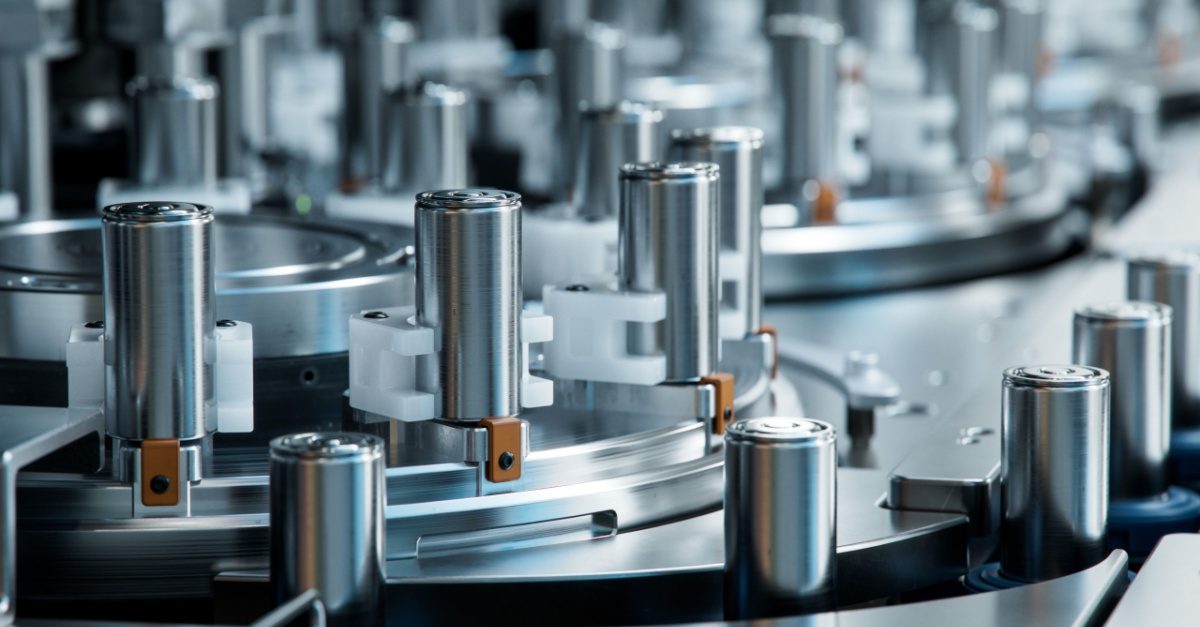
Understanding The Difference Between Discrete And Process Manufacturing
Manufacturing is indeed a revolution in our present world. From single production in the archaic days to mass production in the present day. Manufacturing has rapidly advanced and the manufacturing process has undergone an evolution. In this article, we are going to examine the discrete and process manufacturing, with the help of the basic concepts, to understand the two ‘camps’ manufactured items belong to, and then we will take a closer look at the core elements of each one.
Breaking The Conundrum: Discrete And Process Manufacturing
What Is Discrete Manufacturing
Discrete manufacturing is a complex process. It involves production in low volumes and the final product that will come out will be in individual units. Here, every single section or particle of the products can be separated. It denotes you can assemble or disassemble it easily. Common examples of this category include automobile products, electronics goods, machines, apparel, etc.
The product mechanisms follow the Bills of Mareriala approach. This means the individual components, with their value, integrate to form a new product. Hence, in industrial terms, the process follows made-to-stock, made-to-order, and finally, made-to-order production.
What Is The Process Of Manufacturing
The products that go through the process manufacturing approach use a recipe or formula that amalgamates the raw materials supplied. However, all the ingredients come under the process, and finally, they turn into a finished product.
Unlike discrete manufacturing, where you can easily disassemble all the components into their original form, it is not possible to retrieve the individual components after processing. Simply put, when you have mixed the chemicals or ingredients to prepare the final product, you can not retrieve the raw ingredients as they have already mixed to take a different shape altogether.
Here are some examples of products that come under the manufacturing process:
soft drinks,
pharmaceuticals,
detergents,
rubber,
plant products.
The core definitions of both concepts are vitally important for understanding the differences between discrete and process manufacturing.
The Key Features Of The Discrete Manufacturing
The product that comes under the discrete manufacturing mode may follow different manufacturing approaches. It denotes converting the raw materials into the finished products through quite several steps. The required activities may differ from one industry to another. However, some of the workstream requirements are followed in the manufacturing processes. They include Production Planning, Procurement, Inventory Management, Production Management, bill of material, quality control, and fulfillment.
Bill Of Materials
Simply put this is like a list of ingredients you need to prepare a food item at home. Those tasked with manufacturing the items break the discrete products into their constituent components in the Bill of Materials, or BOM.
The top assembly, that is, the finished goods, will have the subassembly and their individual parts. Finally integrating them all makes the discrete product.
Procurement
When a product is sold, it usually creates more demand in the market. Demand management is a key part of any manufacturing operation with customer expectations a key element to consider. It is the responsibility of the procurement department to ensure they can source the required quantities of each item (the raw materials) to allow production at a level/rate that will meet customer demand for the products.
Production Planning
Another important aspect of defining discrete vs. process manufacturing is production planning. Production begins with a high-level demand plan. It usually provides an idea or outline of the quantity of products that the manufacturing teams will be producing within a given time frame. Consequently, it requires a lot of planning and scheduling. The biggest challenge of this phase is probably coordination.
Inventory Management
Before the start of the manufacturing process, there needs to be a sufficient level of inventory ready to be utilised. Production cannot commence without all of the parts ready to be utilised. This requires the material handlers to know and understand the quantity and movement of goods. Ultimately, effective inventory management keeps the operating facility smooth.
Product Management
Once production initiates, the discrete manufacturing ERP has to keep data on the quantity produced per batch. However, with the assistance of automated production recording, the management can count on the figures for unit production and scrap or wastage that comes out of the unit or batch-wise production.
Quality Control
One key section of the discussion of discrete vs. process manufacturing is the quality control stage. When a product is well established in the market, the manufacturing body considers the formulation or preparation process the standard. Standardisation is key to manufacturing in large batches.
Other than this, you have the quality compliance requirement, which the manufacturing units have to strictly adhere to. This can present a range of challenges depending on the items being manufactured and the importance of quality in relation to the product/customer expectations.
Fulfillment
Now that the orders have been completed, and so has the production, the goods will be staged for shipping. With the help of discrete manufacturing, the ERP oversees the entire work and the consumption of raw inventory.
The Essential Features In Process Manufacturing
Like discrete manufacturing, process manufacturing has key features. Like the previous discussion, it is also one of the most essential segments of the debate, discrete vs. process manufacturing.
The Ability Of Tracking
The ERP which is set for this very process, must be capable of providing end-to-end traceability. Moreover, this feature will follow from the start of the procurement of raw materials for the order to the completion of the entire order. However, some challenges exist in the process. It is imperative that stakeholders make use of technology to ensure that the entire flow of goods and services.
Process Manufacturing Supports The Diverse Measurement Units
A process manufacturing ERP must support conversions between multiple units of measurement. Measurement takes place throughout the purchase of raw materials, order and inventory management, and finally, shipping. This process helps understand the quantity of raw materials required for one unit and the requirement for the following batches.
Tracking Costs
One key feature of process manufacturing is cost tracking. This is an important section not only in the overall discussion of discrete vs. process manufacturing but also in production in general.
Remember, you have to keep the production cost under control so that you end up earning profits… it’s as simple as that. This process includes using ERP software that can track the cost of ingredients and thereafter calculate the cost per unit of production. Successful cost tracking involves calculating the usage of raw materials and other key characteristics such as prosecution, waste, and the cost associated with special storage conditions.
Management Of The Co-Products
The ERP of the process manufacturing must have the capabilities to have complete control and authority over the by- products. The co-products are actually secondary products generated during the entire manufacturing process. They are generated due to the similarities of the process.
Supply Chain Optimisation
One of the key segments of the discussion, discrete vs. process manufacturing, is supply chain optimisation. One of the primary benefits of this feature is maintaining the vendor relationship. Ultimately, it ensures the usage of high-quality materials for the entire production.
Another key benefit is that the goods from the entire price become cheaper and of higher quality. Moreover, with the help of process management, you can ensure that the over-distribution of resources has an optimised, efficient, cost-effective utilisation.
Agile Production Support
The ERO for process manufacturing, supported by agile production capabilities, can help manufacturers plan ahead of time. Moreover, with it, you have to adjust the plans as per your requirement so that it increases the efficiency and thereafter makes the most of the equipment.
Supply And Trade Secrets
Inserting your component list or recipes into the software system might be risky, mainly for copyrighted products. However, by taking advantage of ERP software, manufacturers can encrypt data transfers. This is a must to keep your data secrets.
Putting The Discussion To A Close
We have tried to juxtapose both approaches to manufacturing. Each mechanism has its advantages. These points can help you form an understanding of both concepts in manufacturing. The juxtaposition of the key features is an effective way to decode the discrete vs. process manufacturing conundrum.
Author Bio:
Upasana is a budding journalist with a keen interest in writing. As an optimistic, fun loving and opinionated individual, Upasana considers writing to be therapeutic while finding she is most confident when penning down her thoughts, insights and expertise. Passionate about small business, business marketing and Finance, Upasana writes in a way that connects with the reader on a personal level.


